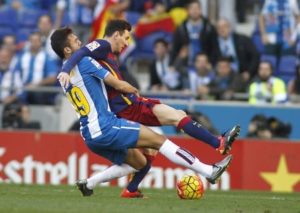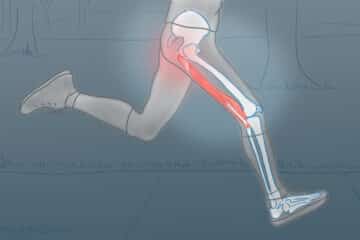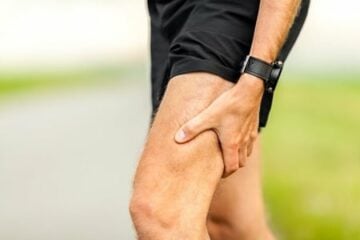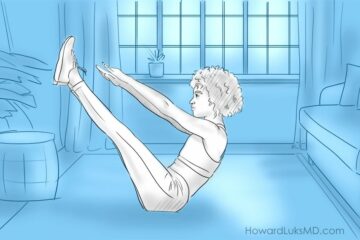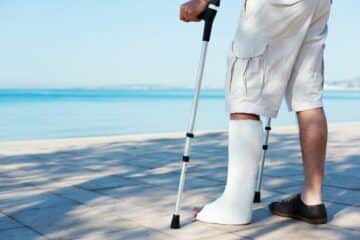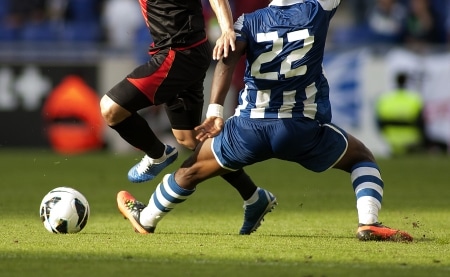
Hamstring injuries are perhaps the most common sports related injury. The trend over the years in the Premier League certainly supports this statistic. More than 40% of injuries in professional soccer have been due to hamstring injuries. The cost burden to Premier League has been extraordinary. We need far more research into movement patterns and injury mechanisms to decrease the risk of hamstring injury in professional soccer.
The hamstring muscle group is in the back of the thigh. The muscles are attached to the pelvis and then course down the leg and attach to the shin bone or tibia. The hamstrings extend the hip and flex or bend the knee. Thus, these muscle cross two joints (the hip and knee joints), and this is one reason why they are subjected to a lot of force which is a set up for injury. The hamstring muscle group fires and propels an athlete forward when they are sprinting. With quick changes in direction or rapid acceleration from standing still the hamstring generates an enormous amount of force. The hamstring muscles are responsible for our being able to marvel at the speed and agility of Lionel Messi and Gareth Bael. They are what propels Cristiano Renaldo forward prior to unleashing a 100 mph blast across the pitch.
Why are hamstring injuries so common in professional soccer?
- Fatigue: Many hamstring injuries occur in the second half of the game. With fatigue comes a shorter stride. With a shorter stride comes a decrease in the length of the muscle. If the player is still trying to propel themselves forward at a rapid pace then they are asking their hamstrings to generate the same power from a shorter muscle. This could be a reason why hamstring injuries occur late in the game in many cases.
- Loss of flexibility: With age, or simply because of their genetic makeup, Premier League players with diminished hip motion and more muscle stiffness are more susceptible to hamstring injuries.
- Were we meant to run fast?: Humans were meant to jog … we did not evolve to support rapid acceleration on a sustained basis, long-term basis. Perhaps the schedule of the Premier League and the sheer number of minutes that a player is on the pitch puts the hamstring at risk for overuse injuries?
- Style of play: Techniques such as counter-pressing could be pushing the players too hard during the 90 minutes on the pitch.
Recurrent hamstring injury is a HUGE issue:
Many variables appear to contribute to the high reinjury rate after return to play following a hamstring injury. Contributing variables include:
- the number of previous hamstring injuries.
- diminished range of motion of the hip.
- decreased isokinetic knee flexion strength.
- poor eccentric strength: nordic hamstring stretch performance.
- location of the injury. Research suggests (but is inconclusive) that the closer the injury is to the pelvis, the longer it takes to RTP and the higher the recurrence.
- persistent tenderness to palpation at the site of injury.
- Studies on PRP injections have been mixed. The best quality studies appear to show no obvious benefit. The jury is still out on the role of PRP injections in managing hamstring injuries.
Not all hamstring injuries are created equal. There seem to be different patterns to certain hamstring injuries. Injuries from rapid movements tends to produce injuries to the biceps femoris. Biceps femoris injuries appear to be more prone to reinjury after return to play. Other injuries patterns occur from an extreme stretch, such as a high kick, sliding tackle, etc. These injuries seem to create a different pattern within the semimembranosis muscle and require a longer RTP, but a lower incidence of recurrence.
Unfortunately, recent research suggests that our testing and physical exam techniques do not provide actionable insight into whether or not a player is at risk for a recurrent hamstring strain.
Can Premier League hamstring injuries be prevented?
Although some research suggests that the Nordic Hamstring Exercise (NHE) can prevent hamstring injuries , the overall incidence of hamstring injuries in the Premier League appears to be increasing. Perhaps as FIFA and other organizations gain a better understanding of the root cause of hamstring injuries, and the most appropriate prevention strategies the incidence of injuries will start to diminish. Certain NHE programs have raised issues with compliance in amateur leagues.
Perhaps a focus on movement patterns, kinematics and injury mechanism will provide valuable predictive insight into why these devastating and costly injuries are so common. Research into groin injuries show that the movement pattern of the athlete can predict the nature of their groin injury. Perhaps the same will be true for hamstring injuries. Time, research and analytics will be crucial determinants of whether or not hamstring injuries can be prevented by the Premier League.
Do you have questions regarding an Orthopedic injury or longevity?
Do you want to talk to an expert who can listen to you for 45-60 minutes and explain the options in detail?
Dr. Howard Luks offers remote guidance sessions to review your X-ray or MRI images and explain your options.
Dr. Luks has also received hundreds of requests for educational sessions on the topics discussed in his book, Longevity Simplified.
